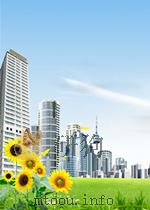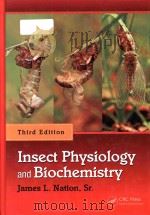《Modern Trends in Physiology and Biochemistry》
| 作者 | 编者 |
|---|---|
| 出版 | Academic Press Inc. |
| 参考页数 | 538 |
| 出版时间 | 1952(求助前请核对) 目录预览 |
| ISBN号 | 无 — 求助条款 |
| PDF编号 | 812589288(仅供预览,未存储实际文件) |
| 求助格式 | 扫描PDF(若分多册发行,每次仅能受理1册) |
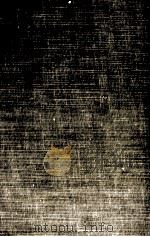
The Mechanism of Enzymatic Oxidation-Reductions&BY E.S.GUZMAN BARRON,Chemical Division,The Department of Medicine,The University of Chicago,Chicago,Illinois1
Ⅰ.Introduction1
Ⅱ.Oxidation-Reduction Systems in Cell Respiration11
Ⅲ.The Protein Component15
Ⅳ.Mechanism of Enzymatic Oxidations18
References23
The Identification of Enzyme-Substrate Compounds&BY BRITTON CHANCE,Johnson Research Foundation,University of Pennsylvania,Philadelphia,Pennsylvania25
Ⅰ.Introduction25
Ⅱ.The Identification of Catalytically Active Intermediate Compounds of Enzymes with Their Substrates27
Ⅲ.The Correlation of Overall and Enzyme-Substrate Kinetics33
Ⅳ.Summary45
References46
The Cytoplasm,Its Structure and Role in Metabolism,Growth and Differentiation&BY JOHN RUNNSTR?M,Wenner-Gren's Institute,Stockholm,Sweden47
Ⅰ.Cytoplasmic Morphology47
Ⅱ.Experimental Approach to Cytoplasmic Structure49
Ⅲ.Cytoplasmic Components and Metabolism52
Ⅳ.Further Discussion of the Properties and Physiological Changes in the Cytoplasmic Ground Substance58
Ⅴ.The Cell Surface as a Site of Metabolism61
Ⅵ.The Origin of the Particulate Components of the Cytoplasm64
Ⅶ.Interaction between Particulates and the Ground Cytoplasm66
Ⅷ.The Role of Cytoplasm in Differentiation68
References73
Physiology of the Cell Nucleus&BY DANIEL MAZIA,Department of Zoology,University of California,Berkeley.California77
Ⅰ.Introduction77
Ⅱ.The Chemical Description of the Cell Nucleus79
Ⅲ.Biochemical Associations in the Nucleus and Chromosomes82
Ⅳ.The Physical Properties of the Nucleus84
Ⅴ.The Physiological Role of the Cell Nucleus87
Ⅵ.The Nucleus in Cell Metabolism92
Ⅶ.Hypotheses Concerning the Action of the Nucleus100
Ⅷ.Nucleus-Cytoplasm Interaction104
Ⅸ.The Genetic Function of the Nucleus109
Ⅹ.Summary118
References119
The Physiology of Cell Division&BY L.V.HEILBRUNN,Department of Zoology,Unwersity of Pennsylvania,Philadelphia,Pennsylvania123
References133
Molecular Anatomy of the Red Cell Plasma Membrane&BY ARTHUR K.PARPART AND ROBERT BALLENTINE,Department of Biology,Princeton University,Princeton,New Jersey and the McCollum-Pratt Institute,The Johns Hopkins University,Baltimore,Maryland135
Ⅰ.Introduction135
Ⅱ.The Types and Number of Molecules in Erythrocyte Plasma Membrane136
Ⅲ.Lipoprotein Complexes in the Erythrocyte Plasma Membrane137
Ⅳ.Some Physical Properties of the Plasma Membrane139
Ⅴ.Molecular Anatomy of the Plasma Membrane143
References147
The Measurement of Cell Permeability with Particular Reference to the Erythrocyte&BY M.H.JACOBS,Department of Physiology,University of Pennsylvania,Philadelphia,Pennsylvania149
Ⅰ.Introduction149
Ⅱ.The Nature of Cell Permeability151
Ⅲ.The Mathematical Treatment of Permeability154
Ⅵ.Significance of Permeability Constants164
References169
The Sodium and Potassium Balance of Muscle and Nerve&BY H.BURR STEINBACH,The University of Minnesota,Minneapolis,Minnesota173
Ⅰ.Introduction173
Ⅱ.The Normal Distribution of Sodium and Potassium in Muscle and Nerve176
Ⅲ.Alterations in Sodium and Potassium Contents of Muscle and Nerve177
Ⅳ.Permeability of Muscle and Nerve to Sodium and Potassium179
Ⅴ.Active Transport of Sodium in Muscle and Nerve181
Ⅵ.Sodium and Potassium Binding in Muscle and Nerve183
Ⅶ.The Biological Significance of Sodium and Potassium Distribution in Muscle and Nerve186
Ⅷ.Sodium and Potassium in Phenomena of Excitability and Conduction189
References191
Mechanism and Properties of Bioelectric-Potentials&BY HARRY GRUNDFEST,College of Physicians and Surgeons,Columbia University,New York,New York193
Ⅰ.Introduction193
Ⅱ.Excitation195
Ⅲ.Physical Constants of the Nerve Fiber200
Ⅳ.Physiological Consequences of the Physical Properties202
Ⅴ.Local and Propagated Activity204
Ⅵ.The Bioelectric Generator207
Ⅶ.The Compound Spike213
Ⅷ.Some Correlates of the After-Potentials221
References226
Chemical Mechanisms of Nerve Activity&BY DAVID NACHMANSOHN,College of Physicians and Surgeons,Columbia University,New York,New York229
Ⅰ.Introduction:Signs of Nerve Activity Recorded by Physical Methods230
Ⅱ.Chemical Mechanisms of Nerve Activity236
Ⅲ.Summary268
References272
Transmission Processes at Nerve-Muscle Junctions&BY STEPHEN W.KUFFLER,Wilmer Institute,The Johns Hopkins Hospital and University,Baltimore,Maryland277
Ⅰ.Introduction277
Ⅱ.The Mechanism of Transmission279
Ⅲ.General Comment286
Ⅳ.Summary288
References289
On Ultrastructure and Function in Nerve.Nonelectrical,Physical Aspects of Excitation and Conduction,as Deduced Primarily from Polarization Experiments&BY JULIAN M.TOBIAS,Department of Physiology,University of Chicago,Chicago,Illinois291
Ⅰ.Introductory Remarks:General Framework within Which Polarization Experiments Are Oriented291
Ⅱ.Rationale and Justification for Extending Polarization Experiments295
Ⅲ.Results of Certain Polarization Experiments298
Ⅳ.Long Axis Ion Displacement Experiments and Certain Pertinent Calculations304
Ⅴ.Probable Nonelectrical,Physical Components of the Propagating Nerve Impulse Tentatively Predictable from the above Considerations:Question of Net Changes and the Role of Metabolism310
Ⅵ.To What Extent Is There Evidence,from Direct Observations on Conducting Axones,Which Supports or Negates the above Predictions?313
Ⅶ.Concluding Remarks315
Addendum318
References318
Problems in the Comparative Physiology of Nervous Systems&BY C.LADD PROSSER,University of Illinois,Urbana,Illinois323
Ⅰ.Intracellular Participation in Conduction323
Ⅱ.Origin of Nervous Function and Evolutionary Trends325
Ⅲ.Junctional Transmission325
Ⅳ.Mechanism of Action of Acetylcholine,Adrenaline,and Tyramine331
Ⅴ.Inhibition334
Ⅵ.Spontaneous Activity334
Ⅶ.Persistent Changes in Excitability335
References335
Biochemical Evolution&BY GEORGE WALD,The Biological Laboratories,Harvard University,Cambridge,Massachusetts337
Ⅰ.Introduction337
Ⅱ.Immunological Relations339
Ⅲ.Creatine and Arginine342
Ⅳ.Biochemical Recapitulation and Metamorphosis345
Ⅴ.Ionic and Osmotic Relations349
Ⅵ.Carotenoids and Light Reception354
Ⅶ.Heme Pigments362
References372
Thermodynamics and Muscle&By A.SZENT-GY?RGYI,The Institute for Muscle Research,Marine Biological Laboratory,Woods Hole,Massachusetts377
References393
Studies on the Contractile Protein System of Muscle&BY W.F.H.M.MOMMAERTS,Department of Biochemistry,Duke University School of Medicine,Durham,North Carolina395
Ⅰ.The Purification of Myosin396
Ⅱ.Molecular Morphology of Myosin397
Ⅲ.The Properties of Actin398
Ⅳ.The Actomyosin Complex400
Ⅴ.The Effect of ATP upon Actomyosin Systems402
References403
On the Mechanism of Drug Action&BY OTTO LOEWI,Department of Pharmacology,New York University Medical School,New York405
Ⅰ.Introduction405
Ⅱ.Goals of Pharmacology406
Ⅲ.Drugs and the Cell Surface406
Ⅳ.Penetration through the Cell Membrane408
Ⅴ.First Interaction between Drug and Cell410
Ⅵ.The Role of Spatial Configuration and Chemical Modifications411
Ⅶ.The Role of Enzymes413
Ⅷ.Mode of Action of Organ-Specific Drugs416
References423
Some Metal Complexes with Proteins and Other Large Molecules&BY IRVING M.KLOTZ,Department of Chemistry and Department of Biological Sciences,Northwestern University,Evanston,Illinois427
Ⅰ.Introduction427
Ⅱ.Stoichiometry of Metal Complexes428
Ⅲ.Bond Strength of Metal Complexes432
Ⅳ.Molecular Nature of Metal-Protein Linkages443
References450
Some Consideration of the Chemical Structure and Biological Activity of Chymotrypsin&BY HANS NEURATH,Deportment of Biochemistry,University of Washington,Seattle,Washington453
Ⅰ.Introduction453
Ⅱ.Properties of Chymotrypsinogen and Chymotrypsins454
Ⅲ.The Biological Activity of Chymotrypsins460
Ⅳ.General Considerations467
References468
The Oxidative Pathways of Carbohydrate Metabolism&BY E.S.GUZMAN BARRON,The Chemical Division,Department of Medicine,The Uni ersity of Chicago,Chicago,Illinois471
Ⅰ.Introduction471
Ⅱ.Direct Oxidation of Carbohydrates472
Ⅲ.Direct Phosphorylative Oxidation of Carbohydrates476
Ⅳ.Pyruvate Metabolism478
Ⅴ.Anaerobic Reactions of Pyruvic Acid479
Ⅵ.Carbohydrate Oxidation after the Obligatory Phase of Fermentation482
Ⅶ.Oxidation of Acetate486
Ⅷ.Metabolism of Malate and the Reversibility of Oxalacetate Decarboxylation498
Ⅸ.Conclusion502
References503
AUTHOR INDEX509
SUBJECT INDEX525
1952《Modern Trends in Physiology and Biochemistry》由于是年代较久的资料都绝版了,几乎不可能购买到实物。如果大家为了学习确实需要,可向博主求助其电子版PDF文件(由 1952 Academic Press Inc. 出版的版本) 。对合法合规的求助,我会当即受理并将下载地址发送给你。
高度相关资料
-
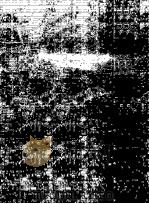
- PHYSIOLOGY BIOCHEMISTRY AND PHARMACOLOGY
- 1996 SPRINGER
-
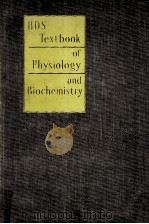
- Textbook of Physiology and Biochemistry
- 1968 E. & S. Livingstone Ltd
-
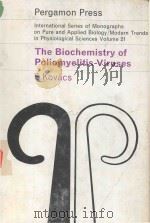
- MODERN TRENDS IN PHYSIOLOGICAL SCIENCES VOLUME 21 THE BIOCHEMISTRY OF POLIOMYELITIS VIRUSES
- 1964 THE MACMILLAN COMPANY
-
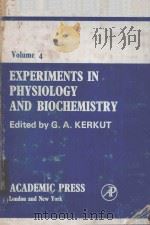
- EXPERIMENTS IN PHYSIOLOGY AND BIOCHEMISTRY VOLUME 4
- 1971 ACADEMIC PRESS
-
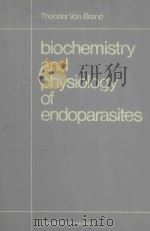
- BIOCHEMISTRY AND PHYSIOLOGY OF ENDOPARASITES
- 1979 ELSEVIER BIOMEDICAL PRESS
-

- MODERN TRENDS IN DERMATOLOGY
- 1954 BUTTERWORTH & CO.PUBLISHERS LTD
-

- INSECTICIDE BIOCHEMISTRY AND PHYSIOLOGY
- 1976 PLENUM PRESS
-
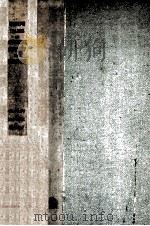
- MODERN TRENDS IN ACCIDENT SURGERY AND MEDICINE
- 1959 BUTTERWORTHS MEDICAL PUBLICATIONS
-

- Modern trends in gynaecology
- 1963 Butterworths
提示:百度云已更名为百度网盘(百度盘),天翼云盘、微盘下载地址……暂未提供。➥ PDF文字可复制化或转WORD


